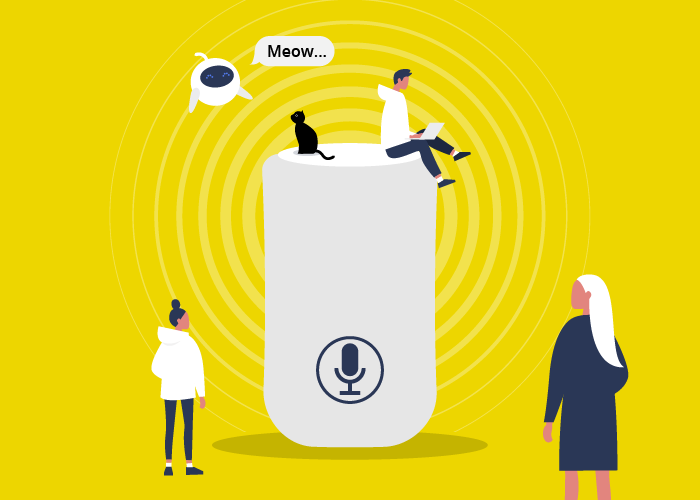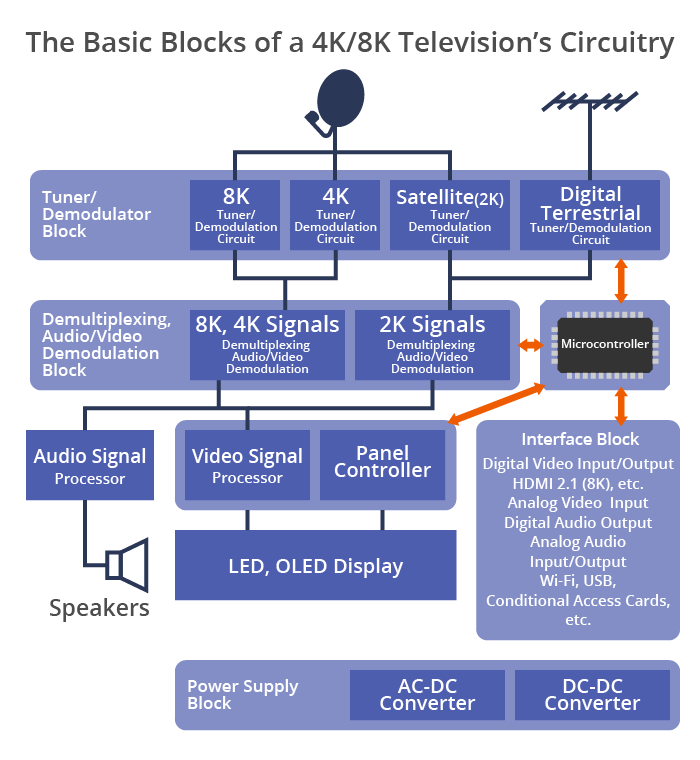Intro to EMC Topics
Practical Applications—Part 4: Interfaces are the Key to Suppressing Radiated Noise in PCs

The digitization and speeding up of electronic devices is an unstoppable technological trend. Clock speeds of personal computers keep rising every year; high-speed interfaces like USB and IEEE 1394 now allow voluminous data like images and video to be sent in short order. Meanwhile, pressure keeps growing to deal with radiated noise more stringently. CISPR (International Special Committee on Radio Interference), for example, has expanded its scope of regulation of radiated noise from PCs up to 6GHz from the prior range of 30MHz to 1GHz.
Inside PCs, motherboards are the primary source of noise
In the past, PCs with built-in TV functionality were mainly desktops; it was uncommon for notebooks. There is a reason for this: TV tuners do not mix well with PCs. This is because the inside of a PC is flooded with noise—a very hostile environment for tuners. In a desktop computer, it’s easier to keep the tuner away from noise sources. But in a notebook computer, the circuitry is so densely packed that it is difficult to even find the space for a tuner—which is why external tuners have been the norm for notebooks.
There are two types of noise that enter and leave a PC: conducted noise and radiated noise. Conducted noise transmitted from power and signal lines can be removed by filtering, reflection, and absorption techniques using LC filters, capacitors, inductors and chip beads. For radiated noise transmitted through space, shielding with metallic or electromagnetic material is essential.
Inside a PC, the motherboard is a particularly large source of noise. It contains the CPU, which is the brain of the PC, as well as chipsets, main memory and other LSIs, and emits periodic noise due to the high-speed transmission and processing of digital signals. Desktop PCs are generally encased in metallic enclosures, which considerably reduces the direct impact of noise radiated from motherboards on other electronic devices. Notebooks, however, are typically made of plastic material, leaving the motherboard practically bare—which is why countermeasures like conductive paint are employed to block radiated noise. Still, it is impossible to completely eliminate radiated noise from a PC.
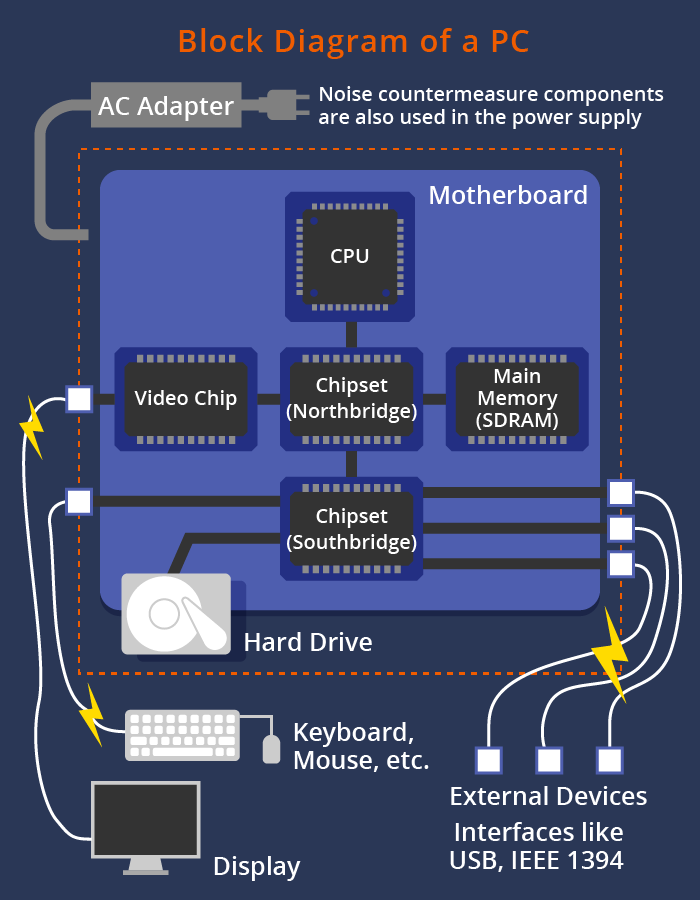
Inside a PC, the motherboard is the primary source of noise. It is therefore shielded with metallic enclosures, electromagnetic shielding materials and conductive paints. Additionally, low-ESL capacitors and chip beads are used around the CPU, chipsets, and video chips to further remove noise.
High-speed digital interfaces use differential transmission
The fact that some amount of noise is always radiating from a PC can be confirmed by placing a portable radio near the main unit, display or interface cables, and observing the reception interference that occurs. Radiated noise is also responsible for many issues, such as slowdowns in DSL and Wi-Fi speeds.
Realistically, it is impossible to perfectly shield a computer. This is because PCs are connected to external devices, and their interfaces are the entry and exit points of radiated noise. In particular, the cables that connect to the keyboard, mouse, monitor, and printer can all behave as antennas for radiated noise.
There are two ways in which noise propagates: differential mode and common mode. Noise that travels across two separate conductors in the outbound and return paths is said to be in differential mode (signals are in differential mode), while common mode noise infiltrates equipment through the floor or the ground. The electrical current of common mode noise is weaker than that of signals, but common mode noise often forms large loops and, as a result, can cause malfunctions and other harm to electronic devices, even at a distance.
In the past, parallel interfaces were used to connect PCs to printers and peripheral devices, sending 16 or 32 bits of data at a time in a synchronized fashion. But this method required multiple signal lines, and was unable to support higher speeds. Worse, as clock speeds climbed, seemingly minor factors like the length and shape of cables could cause the bits to arrive out of sync.
Serial transmission, in which signals are transmitted bit by bit in sequence, eliminates these problems. However, in the type of serial transmission where the signal line is the outbound path and ground is the return path (known as single-ended), the imbalance of stray capacitance between the signal line and ground may generate noise; devices can also become susceptible to interference from external noise and malfunction.
The breakthrough that enabled faster digital signal transmission was the differential transmission method. Here, the signal is sent across two wires with the phases flipped 180 degrees, and the differences between the two are detected at the receiving end. This method is more resilient to external noise, reduces unwanted radiation, and performs well in high-speed applications.
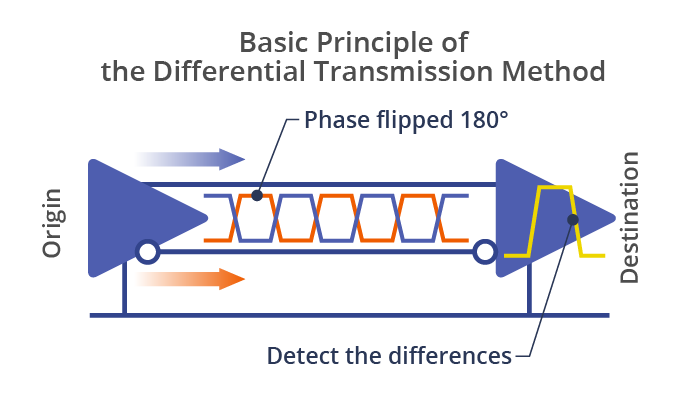
The convenience of USB is supported by common mode filters
USB and IEEE 1394 are high-speed interfaces that use differential transmission. Especially in PCs, USB has made it much simpler to connect keyboards, mice, printers, etc., to personal computers by standardizing on the same type of cables and connectors. Pictures taken with a digital camera or music stored on a PC can be transferred quickly over a USB connection. However, with higher speeds, the harmonic components in the digital signal turn into radiated noise, causing various problems.
Ideally, in differential transmission, the peaks and troughs of the paired signals cancel each other out so that the sum of the two signals—known as the common mode voltage—is zero, and no noise is generated. In reality, however, slight degradations of the pulse waveforms do occur—misalignments between the phases, imperfect rise and fall timings, and variations of the pulse width—resulting in an unbalanced component called skew, which generates common mode noise.
It wouldn’t be an exaggeration to say that common mode noise is the cause of most radiated noise issues in familiar electronic devices like PCs. Common mode filters are used to remove common mode noise by placing them at the connectors of the interfaces between a PC and its peripheral devices. (For the working principle of common mode filters, see Components—Part 5 of this series.)
https://www.tdk.com/en/tech-mag/noise/08
The characteristics of common mode filters are diverse, but for high-speed interfaces, it is important to select a filter with a cutoff frequency as high as possible so as not to attenuate the signal. The square wave of a digital signal is a collection of the fundamental wave and its odd-numbered harmonics. In digital signal transmission, signal quality can be maintained by transmitting up to the 5th to 7th-order harmonics of the fundamental wave. For example, if the transmission frequency is 800MHz, the 7th-order harmonic will be 5.6GHz, and a common mode filter that covers this band is required.
TDK’s common-mode filters were developed by taking full advantage of its ferrite technologies, filter design expertise, and cutting-edge, precision automatic winding technology accumulated over many years. A wide range of products aligned with the high-speed interface era is available, including common mode filters with a cutoff frequency of 6GHz that can accommodate HDMI, up from what was typically 1.6GHz. With faster speeds and increased digitalization, the electronic devices around us are exposed to higher risks from common mode noise. TDK’s common mode filters not only remove common mode noise—they also make signal waveforms cleaner. They are dependable EMC components that support home networks, which are becoming more integrated with PCs.
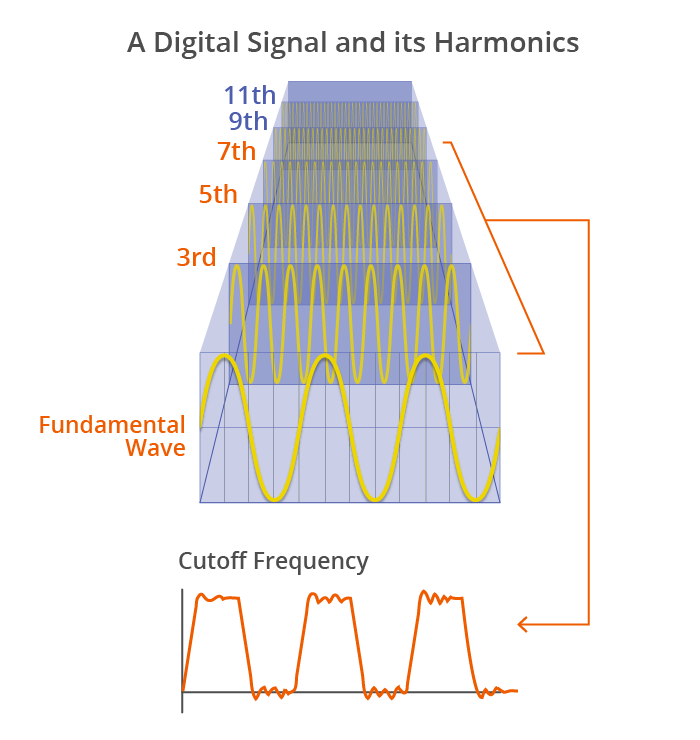
Signal quality can be maintained by transmitting up to five to seven times the harmonics of the fundamental wave. Square waveforms become trapezoidal when higher-order harmonic components are cut off.
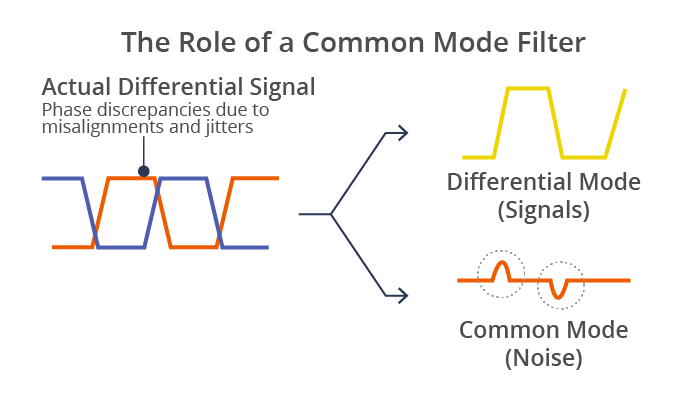
In practice, differential transmission signals are prone to misalignments and jitters that cause phase discrepancies. Without countermeasures, common mode noise will be generated.
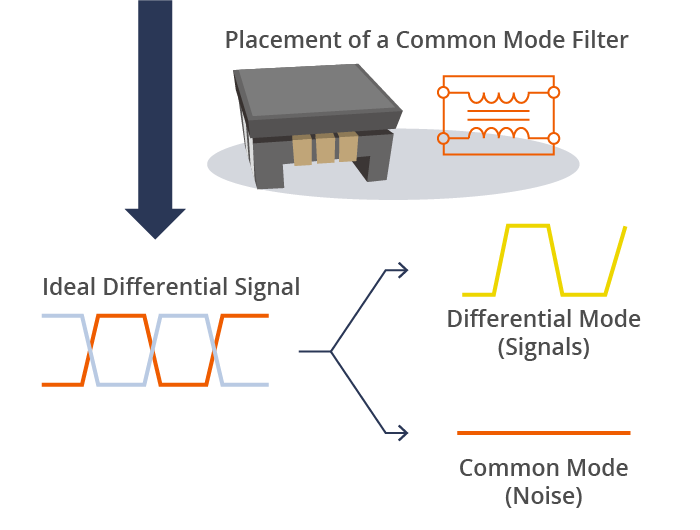
Common mode filters remove common mode noise while making a differential mode signal waveform cleaner, bringing it closer to an ideal differential transmission signal.
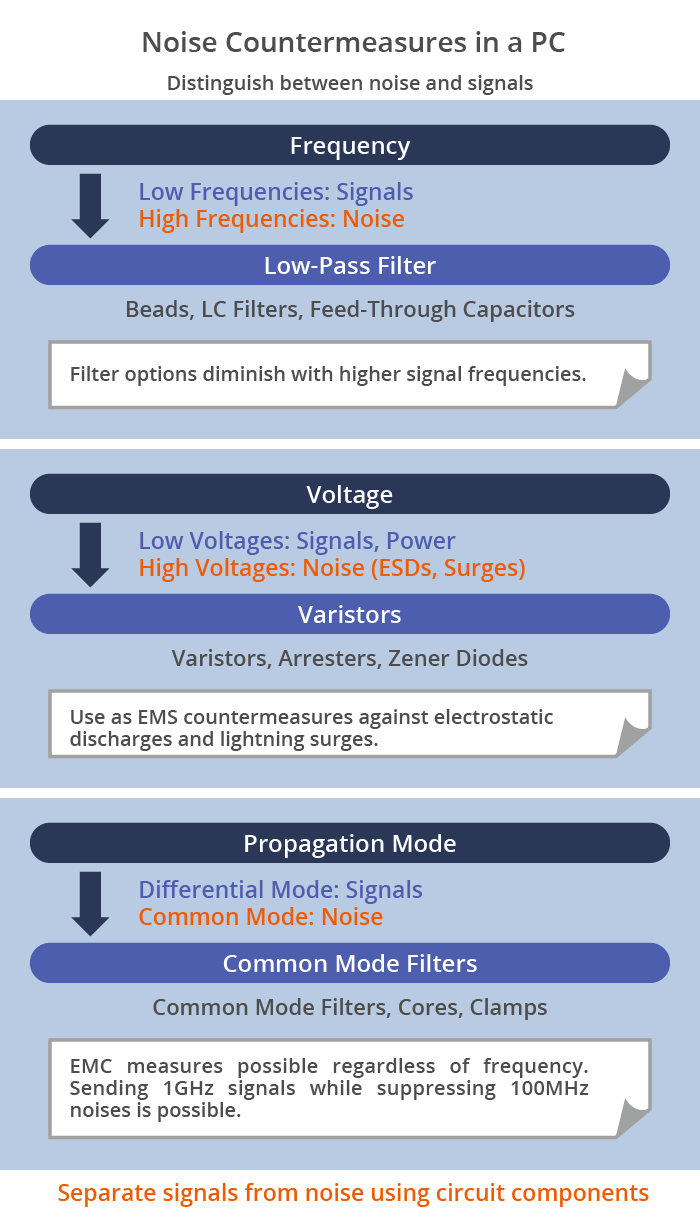
TDK is a comprehensive electronic components manufacturer leading the world in magnetic technology



